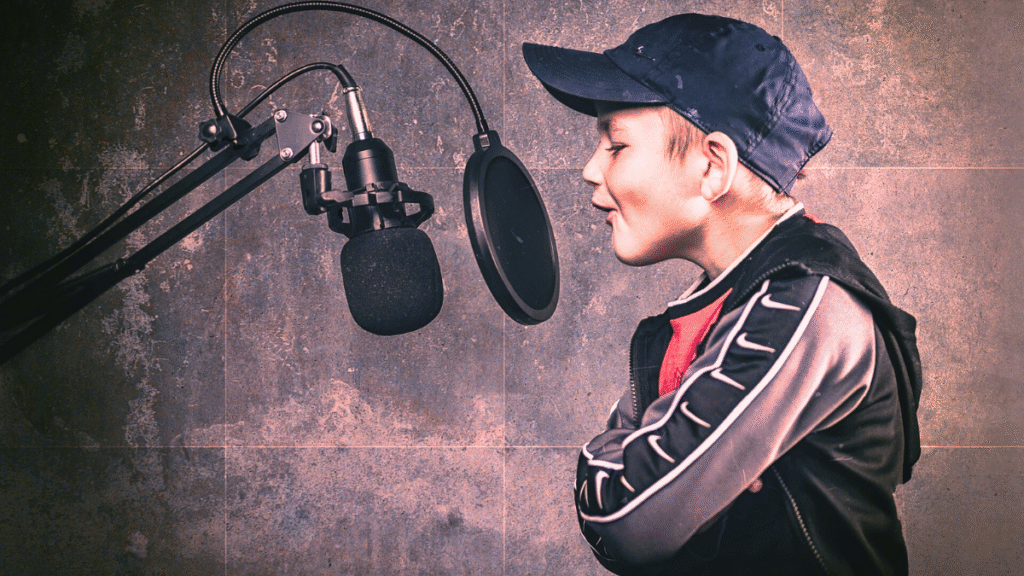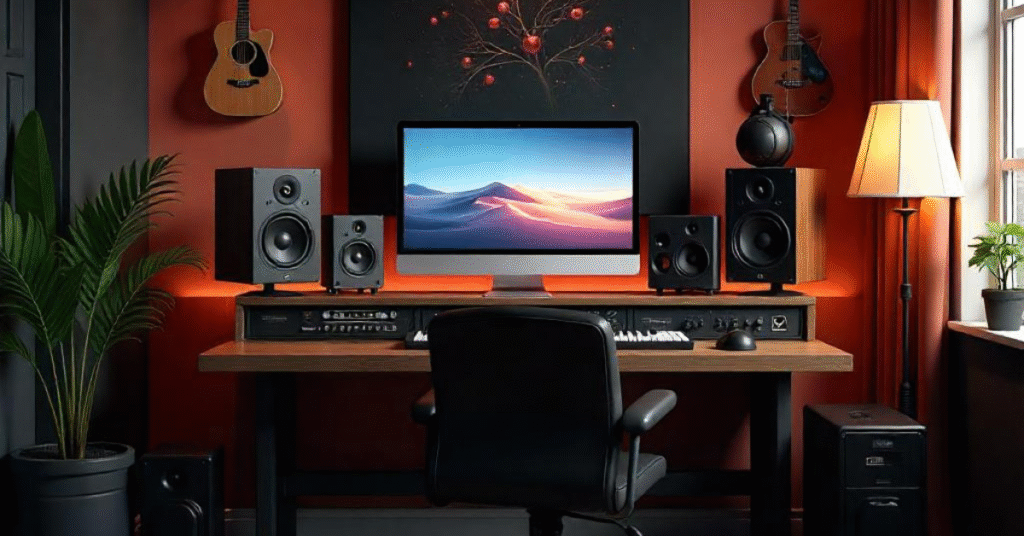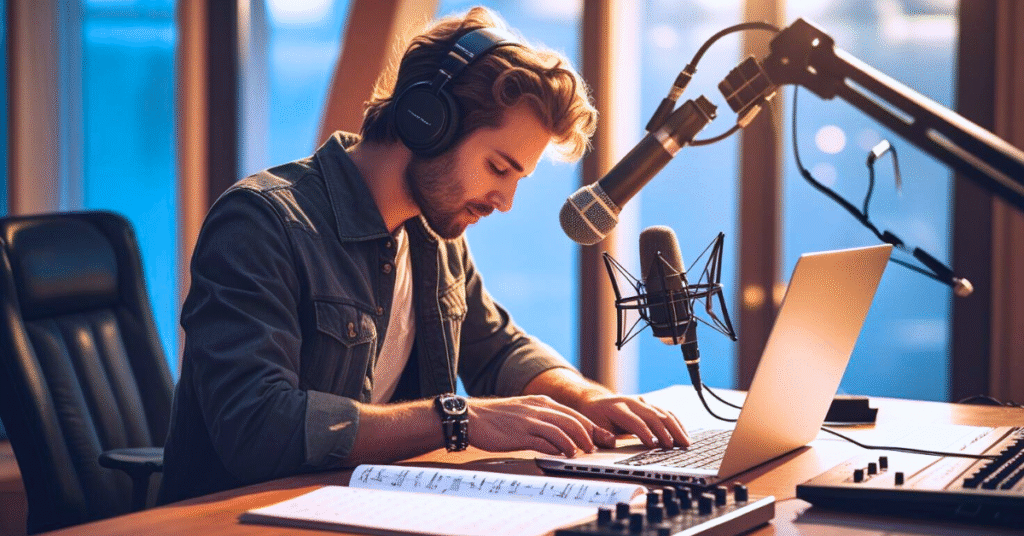How to Make a Pop Filter
Affiliate Disclosure
This post includes affiliate links. We may earn commissions at no cost to you.
Build your own pop filter with these DIY materials or grab affordable pre-made ones.
Clear your vocals and cut harshness—without spending big bucks.

If you’re stepping into the world of home recording, you’ve probably heard about pop filters. But what exactly are they, and how to make a pop filter without spending a fortune? In this guide, we’ll break down everything beginners need to know, including what is a pop filter used for, how to make your own homemade pop filter, and some simple tricks to get professional-quality sound right from your room.
What Is a Pop Filter Used For?
A pop filter is a shield placed between your mouth and microphone that helps reduce popping noises caused by plosive consonants like “p,” “b,” and “t.” (like when recording a song or any vocal) These sounds produce a burst of air that hits the mic’s diaphragm, causing unwanted distortion or loud “pops.” A pop filter not only protects your mic from moisture but also helps smooth out these harsh sounds, resulting in clearer and cleaner vocal recordings.
How to Use a Pop Filter Properly
Understanding how to use a pop filter can greatly improve your recording quality. The pop filter should be placed about 2-6 inches away from your microphone. Position yourself so that the filter is between your mouth and the mic, but don’t let your lips touch the filter. This distance helps reduce plosives effectively while keeping your vocal tone natural.
5 Easy DIY Ways to Make a Pop Filter at Home
Here are five super simple and inexpensive ways to make homemade pop filters using things you already have at home. Yes, I made one myseft when I had no money.
Wire Hanger and Pantyhose Method
This is the most popular DIY hack.
- Bend a wire hanger into a circle about 6-8 inches wide.
- Stretch a piece of pantyhose or tights over the circle tightly.
- Secure the ends with tape or twist the wire.
- Attach the handle part to a mic stand or hold it by hand.
This setup diffuses the air bursts effectively.
Embroidery Hoop with Nylon Stockings
- Use an embroidery hoop (6-8 inches).
- Stretch nylon stockings or sheer fabric over the inner hoop.
- Lock it with the outer hoop and trim excess fabric.
- Attach to your mic stand.
This looks neat and works great.
Kitchen Strainer Mesh
- Find a small kitchen strainer with fine mesh.
- Remove or adjust the handle so it fits your mic stand.
- Use the mesh as your pop filter.
Metal mesh diffuses air nicely and is durable.
Cardboard and Coffee Filter
- Cut a round cardboard piece (about 6-8 inches).
- Glue or tape a coffee filter paper on it.
- Attach a stick or handle.
This is a quick and disposable option.
Plastic Bottle Ring and Cloth
- Cut a ring from the neck of a plastic bottle.
- Stretch thin cloth or nylon over the ring.
- Secure with rubber bands.
- Mount it on your mic stand or hold manually.
This recycles materials and works well.
How to Make a Mic Filter That Actually Works
When making your own mic filter, the goal is to reduce popping without muffling your voice. Use breathable fabrics like pantyhose or nylon. Avoid thick fabrics that block too much sound.
Tips to Get the Best Out of Your Homemade Pop Filter
- Keep the filter 4-6 inches from your mic.
- Keep about 2-4 inches between your mouth and the filter.
- Don’t touch the filter with your lips.
- Regularly clean your pop filter fabric.
FAQ
Q: What is a pop filter used for?
A: To reduce popping sounds caused by plosives and protect your microphone.
Q: How far should the pop filter be from the mic?
A: 2 to 6 inches from the mic and 2 to 4 inches from your mouth.
Q: Can I use any fabric for a pop filter?
A: Breathable fabrics like pantyhose work best.
Q: How to clean a homemade pop filter?
A: Remove fabric and wash gently with soap and water.
Conclusion
DIY pop filters are an easy, affordable way to enhance your home recording setup. By following these simple tricks, you can build your own pop filter, improve your vocal quality, and save money. Now you know how to make a homemade pop filter and how to use a pop filter properly — all with household items!
Have you tried any DIY audio hacks? Share below!
Need help choosing materials or buying cheap options? Comment here.
Hi, I’m Nikhil Farenjiya, a music producer and professional singer with 10 years of experience. I share my knowledge and passion for music through writing to help aspiring artists grow. My blog is dedicated to inspiring and guiding music lovers on their creative journey.



Nice work
Very useful content